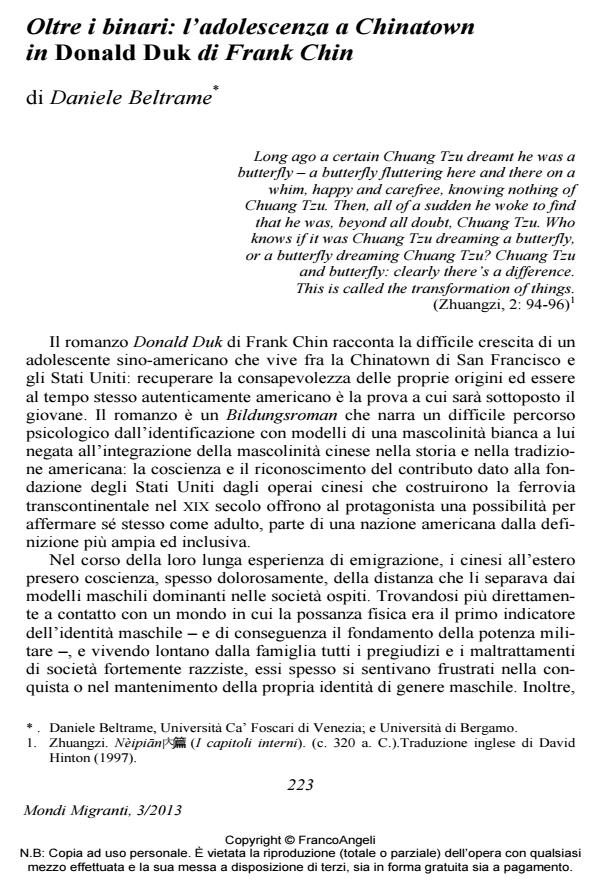Oltre i binari: l’adolescenza a Chinatown in Donald Duk di Frank Chin
Journal title MONDI MIGRANTI
Author/s Daniele Beltrame
Publishing Year 2014 Issue 2013/3
Language Italian Pages 37 P. 223-259 File size 899 KB
DOI 10.3280/MM2013-003010
DOI is like a bar code for intellectual property: to have more infomation
click here
Below, you can see the article first page
If you want to buy this article in PDF format, you can do it, following the instructions to buy download credits

FrancoAngeli is member of Publishers International Linking Association, Inc (PILA), a not-for-profit association which run the CrossRef service enabling links to and from online scholarly content.
Daniele Beltrame, Oltre i binari: l’adolescenza a Chinatown in Donald Duk di Frank Chin in "MONDI MIGRANTI" 3/2013, pp 223-259, DOI: 10.3280/MM2013-003010